Large over-ear headphones have taken a bit of a backseat in recent years, overshadowed by the success of Apple’s AirPods and other pocket-size earbuds (sometimes referred to as true wireless stereo headphones, or TWS). Larger over-ear headphones do still have some important advantages, though, and they’ve been making a bit of a comeback.
The most obviously advantage is the fact that due to their larger size they can use larger drivers–the mechanism inside the earpiece that produces the sound you listen to–providing a more powerful and detailed sound. Larger earpieces can also provide longer battery life, with many of Apple’s rivals providing far more than the 20-24 hours of the Beats and AirPods range.
Apple has its own Bluetooth over-ear headphone offering, the AirPods Max, but there is plenty of competition in this space, including competition from Apple’s own subsidiary Beats, which has been known to produce superior and less expensive headphones than Apple. Apple is also up against traditional Hi-Fi manufacturers, such as Bowers & Wilkins, who have decades of expertise producing over-ear headphones that can meet the demanding standards of audiophiles and Hi-Fi buffs.
So here’s our guide to some of the best over-ear headphones currently available for use with your Mac, iPhone or iPad.
Best Over-Ear Headphones
We have tested the best over-ear headphones (AKA on-ear, cans or full-sized headphones) alongside Apple’s AirPods Max to see what the best option for iPhone, iPad or Mac users seeking a pair of over-ear headphones is. We cover other styles of headphones separately, see: Best earbuds for iPhone and Best wired and USB-C headphones. We also have a comparison of all the AirPods.
Our top choice for Apple users is the Beats Studio Pro because they offer most of the Apple-specific benefits of the AirPods Max as well as great sound at a lower price. We also like the Bowers & Wilkins Px7 S3, which offer excellent sound quality and impressive battery at a good price.
Wondering what’s going on with the AirPods Max? Read AirPods Max 2 rumors: When will Apple update the AirPods Max?
1. Beats Studio Pro – Best over-ear headphones for Apple users
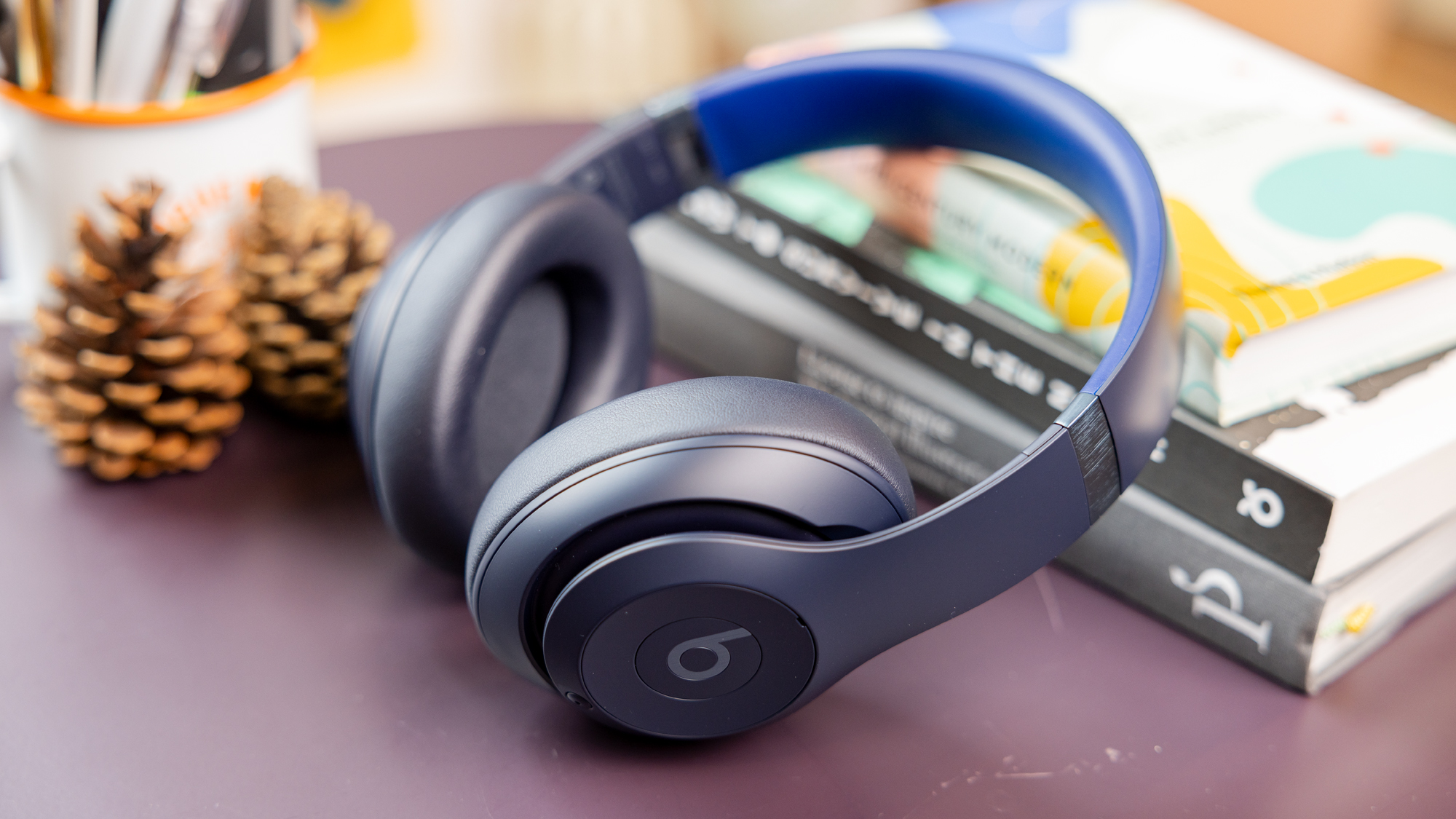
Pros
- Lightweight
- Good compatibility with Apple and other devices
- 3.5mm and USB-C audio input
- Excellent battery life
- Clean and balanced audio
Cons
- Headband is a little stiff
- No ear detection
The Beats Studio Pro are one of the over-ear headphone options from Apple owned Beats. Compared to the AirPods Max (see: AirPods Max vs Beats Studio Pro) they cost less and deliver better sound. They also offer most of the AirPods features, including one-touch pairing, iCloud pairing (although not instant switching), Handoff to Apple Watch, hands-free “Hey Siri” support, and Find My support. They even support personalized Spatial Audio and head tracking. You’ll find all the necessary controls built natively into iOS, as you would expect from of a product from an Apple-owned company.
There are a few missing Apple features, such as ear detection (which would stop them playing when you took them off) and they don’t feature Apple’s H-series headphone chips (even though some Beats products do). Instead, they offer a proprietary Beats processor which allows them to more easily support Android features.
The Beats Studio Pro sound really good. The low end has the clarity and punch of AirPods Max, but the high frequencies are noticeably crisper. The built-in DAC supports hi-res and lossless audio up to 24-bit/48KHz. Adaptive noise canceling quality is excellent, though perhaps not as good as the 2nd-gen AirPods Pro. Noise canceling is not supported in USB-C wired mode. The headphone’s mic can be used as mic input on your Mac or PC (though the quality is not up to the standard of a good dedicated headset).
They are less comfortable to wear than the AirPods Max. The ear cushions don’t have the soft velvety feel of AirPods Max, and the headband is much stiffer, but they are lighter (260 grams compared to 384 grams). They fold up to easily fit in a bag and come with a real carrying case.
On the left cup, you’ll find integrated controls concealed by the b. These are standard play/pause/advance/back control buttons. You’ll also find a standard headphone jack with audio input fully supported without any dongles or adapters. On the right cup you’ll find the power button which is also used to enter pairing mode, or you can double-click it to change noise canceling modes between Signature, Entertainment and Conversation. There is also a USB-C port for charging that can also be plugged any supported audio source for audio input.
We got around 4 hours of playback time from a 10-minute charge. A full charge takes around 2 hours. Beats claims 40 hours of battery life with ANC off and 24 hours with ANC on. That’s about 20 percent better than AirPods Max.
Even if they weren’t $200 cheaper, we’d recommend these over the AirPods Max. The lack of ear detection is a bummer, but Beats Studio Pro delivers betters sound, battery life, controls, and compatibility, and they weigh a lot less too.-Jason Cross
Read our full
Beats Studio Pro review
2. Bowers & Wilkins Px7 S3 – Great sound, good price
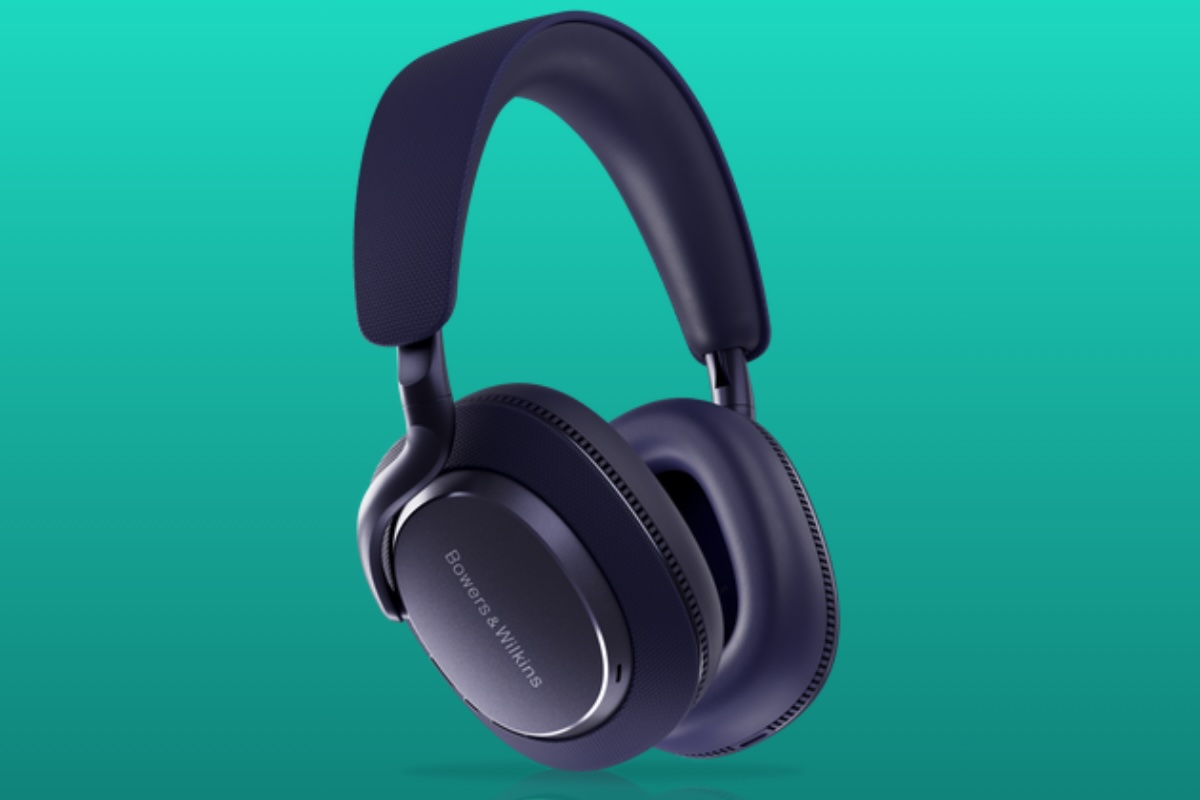
Pros
- Excellent sound quality
- Competitive price
- Impressive battery life
Cons
- Noise-cancellation could be stronger
- No spatial audio or Dolby Atmos
Best Prices Today:
Price comparison from Backmarket
The Px7 S3 is Bowers & Wilkins fourth-generation update for their over-ear Px7 headphones. Resembling their predecessors, with sleek lines and a minimalist design, and available in various pastel shades. B&W has reduced the thickness and weight of the earpieces, making the S3 lighter and more comfortable for long wear and travel. There is also impressive 30-hour battery life even with noise cancellation.
The Px7 S3 supports both wired and wireless modes, Bluetooth 5.3, AAC for Apple devices, aptX Adaptive and aptX Lossless for Android, and is developing its own spatial audio feature for a software update in the future.
The PX range, which had USB-C charging and wired audio capabilities before Apple’s AirPods Max, now features a USB-C port supporting high-res audio formats up to 24-bit/96KHz, surpassing the AirPods Max’s 24-bit/48KHz. This allows it to handle most high-res tracks on Apple Music.
The included USB-C and 3.5mm audio cables support wired connections with most computers and mobile devices, and a hard-shell carrying case is also provided.
Sound quality is excellent, with the Px7 S3 handling the complex sounds of Ricky Martin’s She Bangs. It separates each instrument, even the rattling percussion, and captures the energy of the horns and Ricky’s vocals.
The Px7 S3 also handles delicate sounds, as demonstrated by Max Richter’s On The Nature Of Daylight from The Last Of Us (episode 3). The gentle, winding melody of the cellos, combined with the mournful tone of the strings, creates a tear-jerking atmosphere. The violins and viola add to the bittersweet mood, and the Px7 S3 creates a sense of space that allows the strings to float gracefully and weave a delicate dance.
The Px7 S3 excels in sound quality and value for money, but its noise-cancellation features are less effective than those of more expensive rivals like the AirPods Max and Bose QC Ultra. While it blocks low-frequency sounds well, higher frequencies like voices in a busy airport still leak through.
If noise-cancellation is your priority, there are more expensive headphones that block out background noise more effectively. However, the Px7 S3’s excellent sound quality and impressive battery life make it a great option for anyone seeking high-quality headphones at a competitive price.-Cliff Joseph
Read our full
Bowers & Wilkins Px7 S3 review
3. Bowers & Wilkins Px8 S2 – Exceptional sound quality
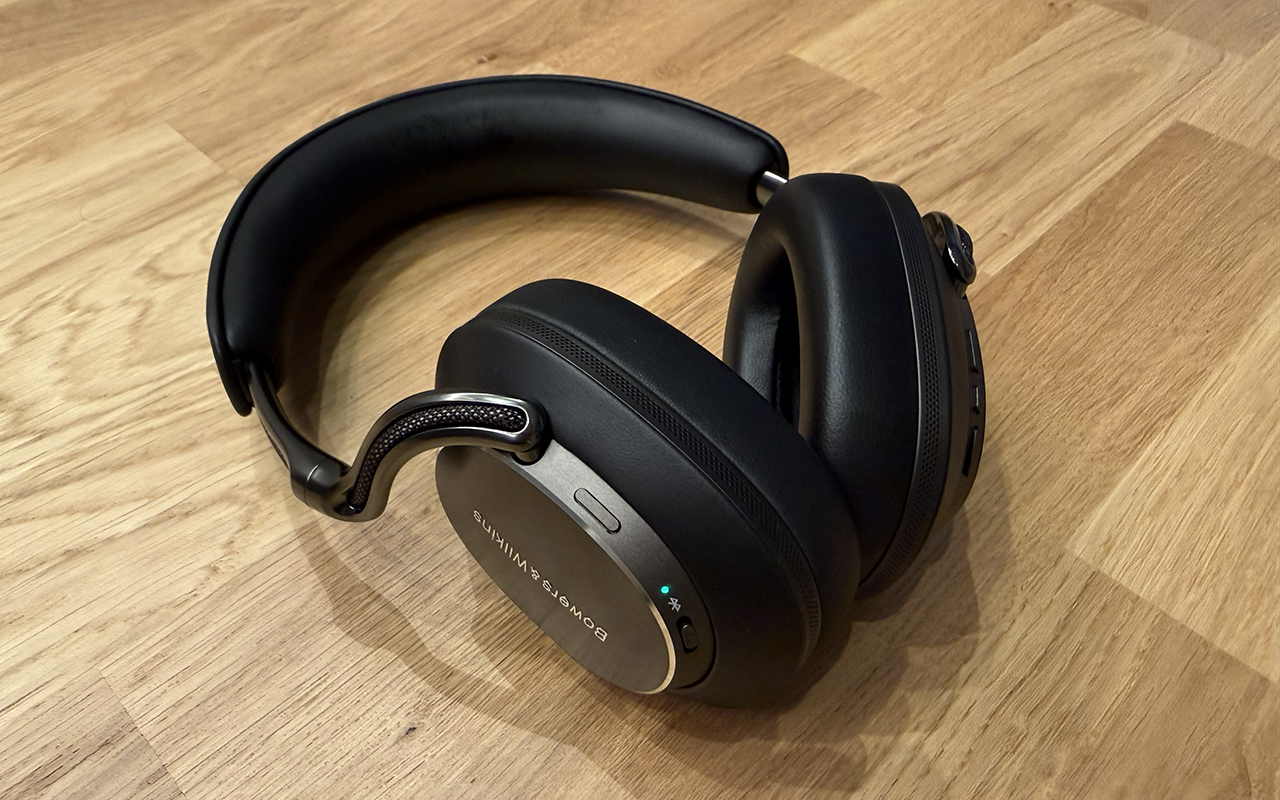
Pros
- Superb sound quality
- Great bass sound
- 30 hours battery life
- Bluetooth and wired modes
Cons
- Expensive
- Noise-cancellation could be stronger
- No Spatial Audio (yet)
Best Prices Today:
Price comparison from Backmarket
The original Px8 from Bowers & Wilkins was a top pick for over-ear headphones when it launched in 2022. The Px8 S2 costs more than its predecessor and Apple’s AirPods Max. The high price is justified by a luxurious design and improved sound quality.
The Px8 S2 looks similar to its predecessor, with B&W’s trademark rectangular earpieces with rounded corners and a curved aluminium armature. The earpieces are slightly slimmer and lighter, weighing 310g compared to 386g for the AirPods Max. Despite the weight reduction, the build quality remains high, with padded earpieces and a headband wrapped in soft Nappa leather.
The Px8 S2 is light and comfortable for long wear, with redesigned button controls for firmer volume adjustments. The sturdy aluminium armature ensures durability, and a hardshell carrying case is included for travel.
Inside, B&W has fine-tuned the 40mm carbon-fibre drivers to reduce distortion and improve bass. Wireless audio has been updated with Bluetooth 5.3, aptX Lossless, and AAC for Apple devices. A USB-C port, cable, and 3.5mm-to-USB-C cable allow for wired high-res audio.
Eight microphones improve noise cancellation and clarity on voice calls. Battery life is impressive at 30 hours with noise cancellation (compared to 20 hours for AirPods Max). A quick-charge feature provides seven hours of music after 15 minutes.
The B&W Music app has been updated with a five-band equaliser and custom presets, a feature missing in previous versions. However, support for Dolby Atmos or spatial audio is missing – a software update for spatial audio and Bluetooth Auracast is planned.
The Px8 S2 lives up to the claim of being B&W’s best headphones. To test its improved bass performance, I played Max Richter’s Shadow Journal. The Px8 S2 created a hazy, ambient sound for the electronic loops, with clear violins and violas, and effectively embraced the reverberating bass rumble.
The improved noise-cancellation was evident in blocking the low-frequency drone of an aircraft engine, though it let in a noticeable whisper of higher frequencies. The AirPods Max and Bose’s QuietComfort headphones still have the edge in noise-cancellation.
The Px8 S2 excels in sound quality, wired connectivity, and battery life, but the price is high. You may find a good deal on older Px8 and we’ve also looked at the company’s mid-range Px7 S3, both included.-Cliff Joseph
Read our full
Bowers & Wilkins Px8 S2 review
4. Bose QuietComfort Ultra – Excellent noise cancellation

Pros
- High-grade audio reproduction
- Bose’s best-ever active noise cancellation
- All day wearability
- Immersive Audio
Cons
- While improved, battery life isn’t state of the art
- Immersive Audio can be gimmicky
Best Prices Today:
Price comparison from Backmarket
The Bose QuietComfort Ultra Headphones are pricy, but they are still cheaper than the Apple AirPods Max. They do offer excellent sound quality and active noise cancellation, though, which goes a long way to justify the price.
They also support aptX streaming, and feature Bose’s CustomTune technology for personalizing the headphones’ audio to your unique ears. There’s also a spatial audio option.
Operational controls are minimalist. On the right-hand cup, there are two buttons and a thin thermal volume strip. Sliding a finger up or down the strip adjusts the volume. Tapping and holding the strip activates one of several shortcuts. A second button performs several functions such as play and pause the music, answer or decline a call. A long press lets you cycle through audio listening modes including Quiet, Aware and Immersion. There’s also a Wind Noise Suppression feature. Immersive Audio feature is particularly impressive, but doesn’t suit every music type.
On-Head Detection circuitry senses when you put them on and take them off, so there is no need for the power button. The manufacturer says they will auto-shut off after 24 hours of idle time. Run time is quoted as up to 24 hours and they achieve a full charge in less than three hours
The headband is soft-touch pleather and the memory foam in the ear cups feels premium grade. It seals and cushions reasonably without being bulky and resided comfortably on my head almost all day long. –Jonathan Takiff
5. Sonos Ace – Top-notch active noise cancellation
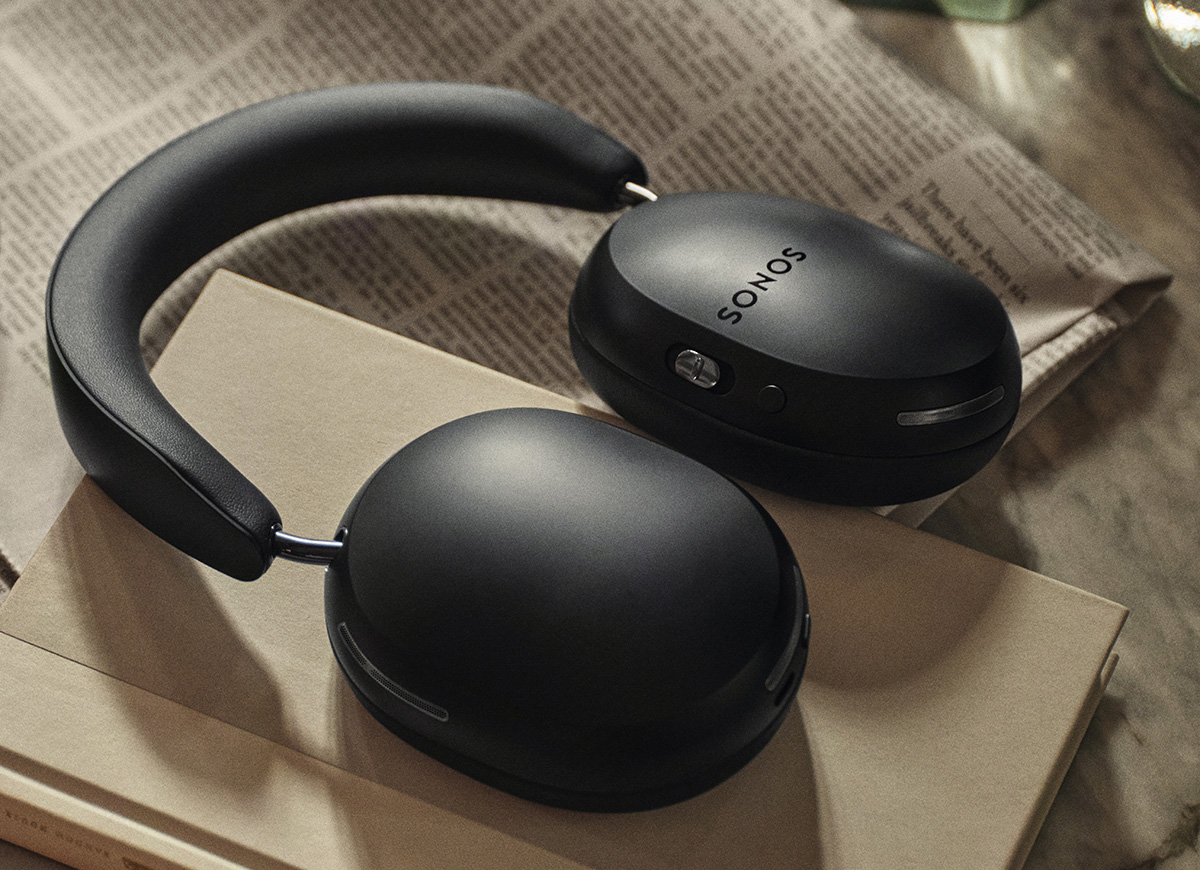
Pros
- Comfortable
- Stylish and premium feel
- Transfer sound from Sonos soundbars
- Top-notch noise cancelling and transparency
Cons
- Sonos App upon release is in rough shape
- Pricey
The Sonos Ace is expensive, but delivers excellent quality. Audio quality is roughly on par with AirPods Max—you’ll want to bump up the treble just a touch in the Sonos app’s EQ settings—and noise cancelling holds its own against contemporaries from Bose, Sony, et al. Of note, the transparency mode (Sonos calls it “Aware Mode”) on the Ace is the only one I’ve ever heard that’s as good as Apple’s.
Battery life is fantastic, rated at 30 hours with ANC enabled, and you get some nice features like full USB-C audio mode (with support for lossless audio) and a standard 3.5mm plug for analog sources. If you also sometimes use Android products, you’ll be happy to know you give up none of its features, and in fact with some Android headsets (those that use AptX Lossless) you can even do lossless audio over Bluetooth.
One downside is that it slightly defies expectations for those who are used to Sonos products; unlike all the Sonos speakers, this is not a Wi-Fi connected product that directly streams audio. Rather, it’s Bluetooth only and streams audio from your phone or other Bluetooth device.
If you have a Sonos soundbar, a long-press of the main “content key” will instantly swap the audio from your soundbar to your Ace headphones and back again.-Jason Cross
6. JBL Tour One M3 Smart TX – Auracast headphones
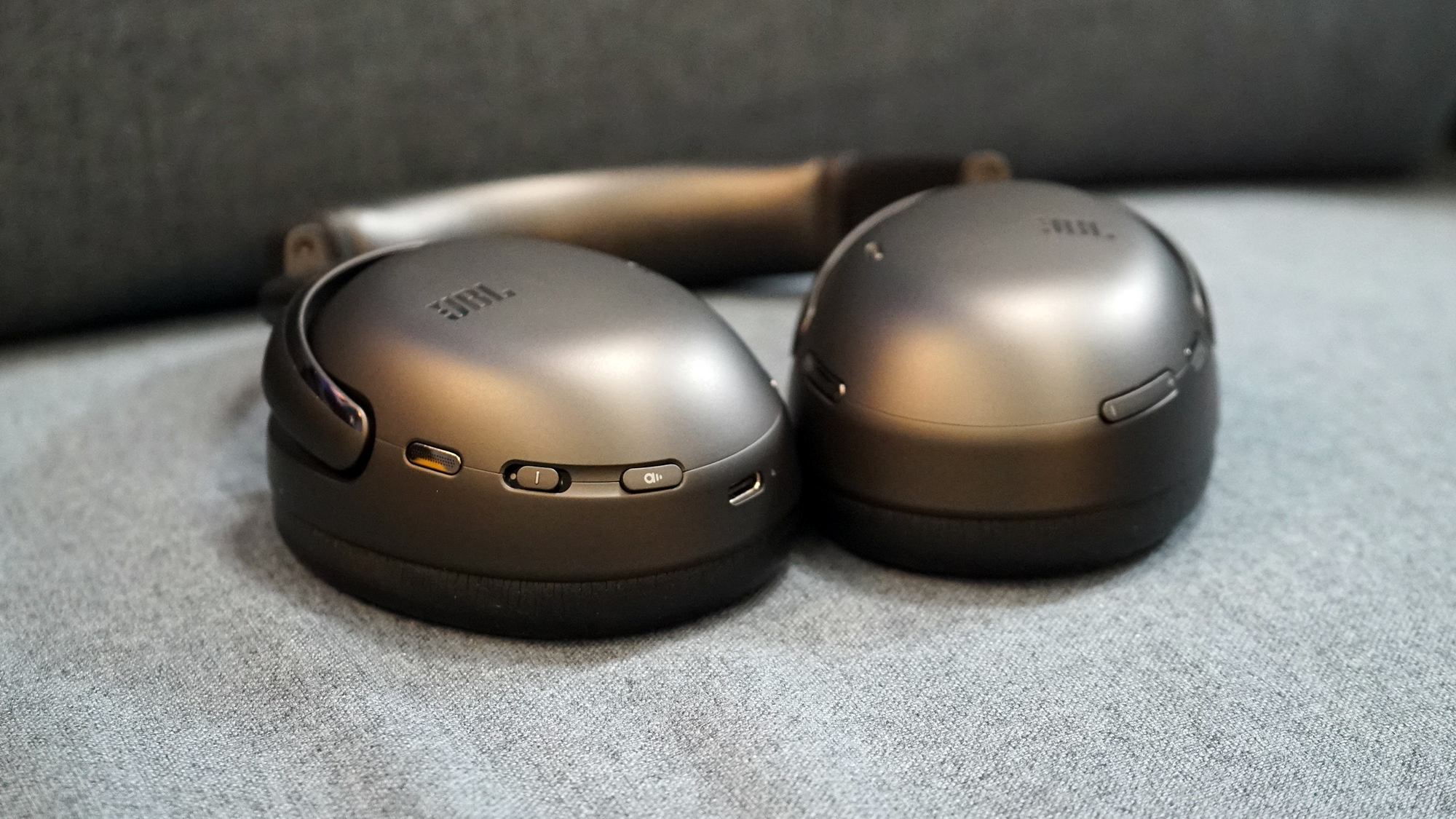
Best Prices Today:
Price comparison from Backmarket
JBL’s Tour One M3 headphones come in various colours. They also include a separate ‘Smart TX’ transmitter that can connect to wired audio sources like laptops or in-flight entertainment systems. It transmits wireless audio to the M3 via Bluetooth or Auracast to multiple nearby headphones that support Auracast, a new broadcasting technology. Auracast allows one device or audio source to transmit Bluetooth audio to multiple sets of headphones.
The M3 has a conventional design with large padded earpieces and an adjustable headband. It weighs only 278g, making it light and comfortable for long journeys. The lightweight plastic casing lacks the sturdiness of the AirPods Max, but JBL includes a hard-shell carrying case for safety.
Battery life is excellent, lasting 70 hours on a single charge. Active noise-cancellation reduces this to 40 hours, but it should still suffice for long flights. The M3 also has a fast-charge feature that provides five hours of music with a quick five-minute charge.
The M3 can be used on its own via Bluetooth or with a wired connection via the USB-C port on the right earpiece. It supports Apple’s AAC codec for Bluetooth audio and Sony’s LDAC, but it lacks the high-quality aptX codec, which is a disappointment given its price.
Sound quality using AAC is fine, and the M3 handles the sounds on Ricky Martin’s She Bangs well, streamed from Apple Music in lossless format. The lively energy of the horns and the smooth sound of the bass guitar make it enjoyable. The M3 also pulls out details in the mix, including the light tinkling piano, rattling cowbells, and maracas.
The noise-cancellation is good at dealing with low-frequency drone, but leaves room for improvement. It can’t match the highly effective noise-cancellation of more expensive rivals like the AirPods Max or the Bose Quiet Comfort range.
In conventional Bluetooth mode, the 10-band EQ in the JBL app allows you to adjust the sound to your taste. There’s also an option called Personi-fi that analyses your hearing and adjusts the sound profile for the best results.
You can also switch to the Smart TX transmitter, which works with wired audio sources like entertainment systems on planes or in gyms. It transmits wireless audio to the M3 via Bluetooth or broadcasts to multiple sets of nearby headphones using Auracast.
The transmitter has a small touch-sensitive LCD screen for adjusting volume, noise-cancellation, and other settings. There are two USB-C ports: one for power and a wired audio connection, and the other for power only. There are also cables for 3.5mm audio and USB-C, and a USB-A adaptor for compatibility with various devices.
While headphones with better noise-cancellation may suit frequent fliers and business travellers, the M3 offers good sound quality and impressive battery life at a lower price than high-end rivals like the AirPods Max. Its Smart TX transmitter provides useful connectivity features and support for Auracast, which few rivals can match.
The previous M2 model is still widely available, so ensure you buy the correct model when ordering – or look out for deals on the older model.
Read our full
JBL Tour One M3 Smart TX review
7. Bowers & Wilkins Px8 – Look our for price drops

Pros
- Hi-fi sound quality
- Luxurious design
- Bluetooth with AAC, aptX
- USB-C and 3.5mm wired connections
Cons
- Expensive
- A little heavy (320g)
Best Prices Today:
Price comparison from Backmarket
Apple surprised a lot of us when it (finally) added USB-C and 3.5mm wired inputs to the Beats Studio Pro. However, hi-fi specialists Bowers & Wilkins have been using USB-C to provide lossless and high-res audio with their PX range of headphones since 2017.
These are on the pricy side, but now that B&W has introduced the Bowers & Wilkins Px8 S2 (see above) you will likely see some big price cuts. Even with the high price, the design and sound quality are impeccable. Available in black or tan, the padded headband and earpieces feel absolutely luxurious (although the leather covering might not suit everyone). The adjustable cast-aluminum armatures look very smart and are sturdy enough to cope with life on the road when you’re traveling, and there’s a hard-shell carrying case included as well.
The 40mm drivers support Bluetooth with support for both Apple’s AAC and aptX Adaptive for Android users. As mentioned, there’s a USB-C interface for wired connections and lossless audio, and a 3.5mm adaptor is included for good old-fashioned analog audio as well. The sound quality is as good as you’d expect from a company with B&W’s hi-fi heritage. There’s an icy clarity to the steel guitar on You Can’t Trust Violence by Low, and the band’s harmonies are smooth as silk, even as they repeat the chilling chorus of “no, you can’t trust violence…”. There’s a nice bass sound too, bouncing along with a firm, infectious rhythm on Bad Guy by Billie Eilish, and contrasting well with the sharp, precise finger snaps that set the pace and drive the track forward.
The noise-cancellation features work very well too, and with 30 hours of battery life when using Bluetooth and noise-cancellation the Px8 is a great option for frequent fliers or commuting on a train. The luxurious design and sound quality of the Px8 are worth every penny. –Cliff Joseph
Read our full
Bowers & Wilkins Px8 review
8. Sennheiser Momentum 4 Wireless – Good value
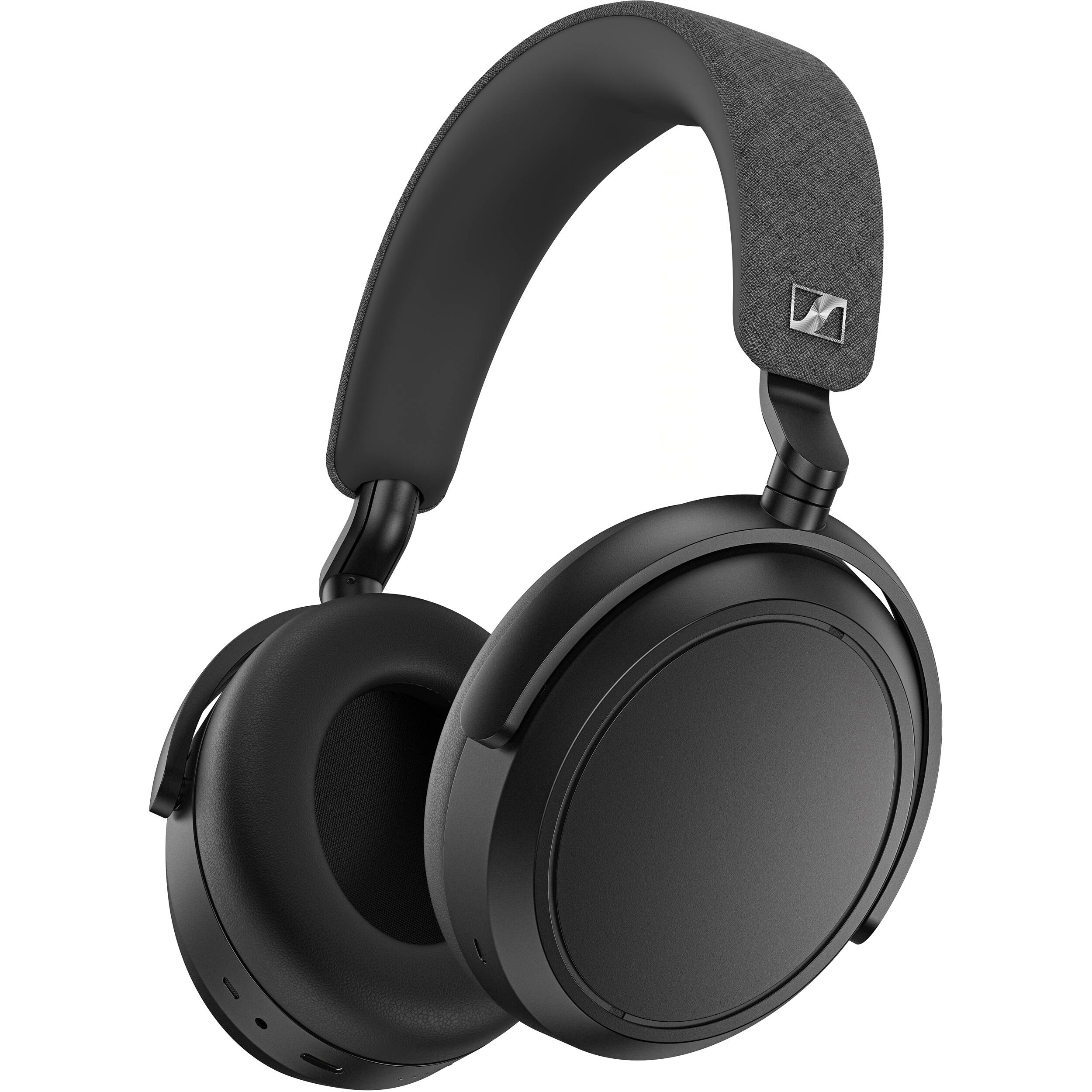
Pros
- Competitive price
- Impressive battery life
- Supports AAC, aptX Adaptive
- Good carrying case and accessories
Cons
- 2.5mm line-in connector
- Some users may require a USB-C adaptor
The first set of headphones that I ever bought in my student days was made by Sennheiser, but the company isn’t trading on nostalgia with its Momentum 4 Wireless, which provides excellent sound quality and features at a competitive price.
This fourth-generation Momentum is a bit more compact and streamlined than its predecessors, with the weight now reduced to just 293g in order to ensure that it’s light and comfortable to wear for long periods of time. Even so, Sennheiser has still managed to squeeze an impressive range of features into the headphones, starting with 42mm drivers that are larger than those used by most of its rivals. These also provide an impressive frequency response of 6Hz – 22KHz, which again beats most rival headphones in this price range.
Unsurprisingly, the Momentum 4 provides excellent sound quality. It digs deep and delivers a taut, menacing bass pulse on You Should See Me In A Crown by Billie Eilish. The higher frequencies work well too, capturing Billie’s whispered vocals with great clarity, and picking out the edgy ticking of percussion that gives the song its manic energy.
The digital features are right up to date as well, with Bluetooth 5.2, and support for both AAC for Apple devices and aptX Adaptive for Android. The USB-C port on the right earpiece can be used for charging, but also supports USB audio for wired connections, and there’s a 2.5mm analog line-in connector too (with cable provided). However, the USB cable provided by Sennheiser is USB-A-to-USB-C, so you’ll need to provide your own USB-C adaptor for Macs and iPads that only have USB-C.
The noise-cancellation features work very well, and Sennheiser’s Smart Control app lets you adjust the level of noise-cancellation manually, by using a slider control, or you can just select the ‘adaptive’ option which allows the Momentum to monitor background noise and adjust the noise-cancellation automatically.
But, even with all those features, the really outstanding feature of the Momentum 4 Wireless is its battery life – lasting for around 60 hours even when using Bluetooth and noise-cancellation together. There’s a good set of accessories too, with a hard-shell carrying case and airline adaptor provided for when you’re traveling. And, with a competitive price, the Momentum 4 Wireless even manages to undercut the price of the new Beats Studio Pro as well.-Cliff Joseph
9. Beats Solo 4 – Apple features at a lower price

Pros
- Excellent Apple & Android support
- Great battery life
- USB-C and 3.5mm audio support
Cons
- No ANC
- Design is dated
- No on-ear detection
Best Prices Today:
Price comparison from over 24,000 stores worldwide
When these arrived it had been seven years since Apple-subsidiary Beats had last updated its affordable on-ear Solo headphones. As you would expect, a lot has changed.
The Apple W1 chip has been replaced with a proprietary technology platform that supports features in both Apple and Android devices. Apple users get personalized spatial audio with head tracking and hands-free “Hey Siri” support in addition to all the older stuff (one-touch pairing, iCloud pairing, and Find My support). For non-Apple users there’s support for Google Fast Pair, cloud pairing with your Google account, Find My Device and multi-point pairing for seamless audio switching.
Sound quality is improved compared to the previous generation, as it should be. There is support for USB-C audio output and input, and it is possible to charge and play USB-C audio at the same time. Over USB-C or 3.5mm you can listen to lossless audio (unfortunately the sound reproduction of these headphones is not good enough to notice). Sound is going to be limited by the fact that these are on-ear headphones, lacking the larger diaphragms of over-the-ear models or the tight in-ear fit of earbuds.
There’s a power button on the bottom of the right earpiece. You need to use this because there is no on-ear detection to automate things. The left earpiece has a big button for play/pause/forward/reverse and to trigger the voice assistant. Pressing above or below that button changes the volume.
Beats claims 50 hours of battery life, likely a result of the lack of active noise cancellation, which is probably the biggest strain on battery life. The lack of ANC, which is expected on all but the cheapest earbuds and headphones, could be seen as a disadvantage.
The earpads are soft, but the spring tension makes the pressure a little uncomfortable after long listening periods when I wear my glasses. This is a common problem with on-ear headphones and a reason why over-the-ear cans may be more comfortable. The new models replace the old micro-USB plug with USB-C. – Jason Cross
Read our full
Beats Solo 4 review
10. Apple AirPods Max – Impressive but in need of an update
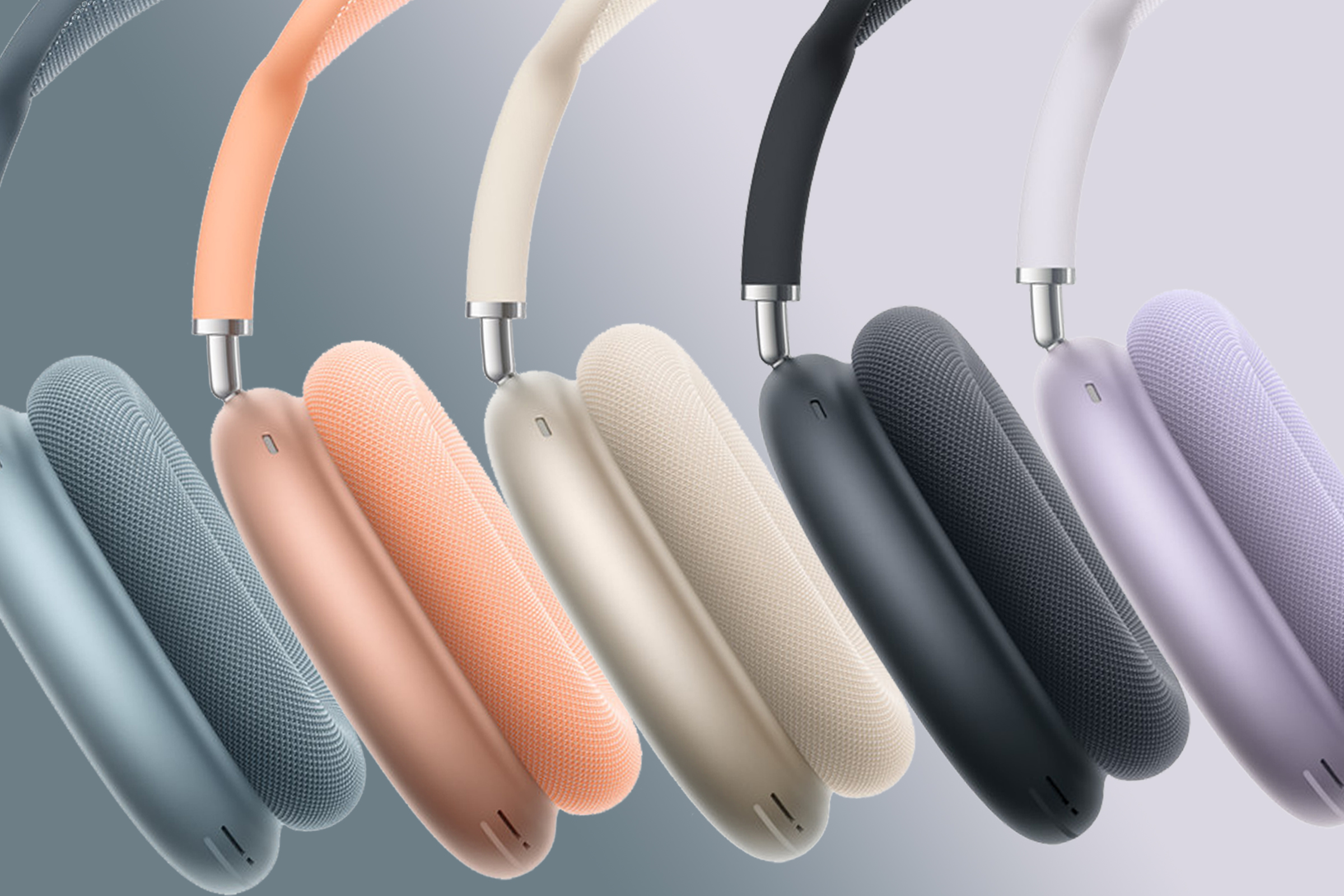
Best Prices Today:
Price comparison from Backmarket
The AirPods Max had a minor update in September 2024 when Apple added USB-C and refreshed the colors on offer. You can now get the AirPods Max in blue, purple, Midnight, Starlight or orange. The price didn’t change.
The AirPods Max are quite comfortable, despite their heavy weight of 384 grams. They look good, thanks to their smooth matte finish on the aluminum closed-back earpieces, the stainless steel rods in the band, the fine mesh of the ear pads and canopy headband. The headband and soft, deep, breathable ear pads are comfortable enough to wear that the weight isn’t too much of a bother (although if you run with them on you’ll feel the bulk).
The controls are simple, intuitive, and unobtrusive. There’s a digital crown like that on the Apple Watch along and a single button on top of the right earpiece. The crown controls volume and playback (skip forwards and backward, press and hold for Siri, etc). The button toggles between noise-canceling and transparency mode and turns noise-canceling on.
Audio reproduction matches other high-end premium wireless Bluetooth headphones. Apple has tuned the AirPods Max to boost bass and mid-high frequencies a bit, which most listeners will probably find quite pleasing. The bass has kick when it’s called for, and it’s clean with no distortion.
The active noise canceling excels at clearing away irregular sounds like traffic, general office disturbances, or background talking. Apple’s transparency mode, which allows you to have a conversation while still listening to the music, sounds clear, natural, and normal.
Since the September 2024 update, the AirPods Max charge with USB-C, but prior to that used the Lightning connector. There is no 3.5mm headphone jack. To listen to lossless audio, or if you’re editing video and want to eliminate the latency of Bluetooth, you can at least now plug them in via USB-C. If you have an older iPhone then you may still be able to buy the older Lightning-equipped version.
We aren’t keen on the Smart Case that the AirPods Max ship with. It’s a case that hardly covers the headphones and doesn’t do anything to protect them. The case does evoke a low-power mode to save battery, but that’s about it. Apple promises a battery life of 20 hours of listening time with noise canceling enabled, which isn’t quite as good as the competition. Charging is fast: just 15 minutes on a basic 5-watt power adapter took us from 20 to 44 percent
But, the biggest problem is the price. At $549/£499 it’s difficult to recommend AirPods Max when the competition costs $200/£200 less. At least the price has come down in the U.K. in recent years. You do get what you pay for though: build quality is unmatched and there are some clever design flourishes. But there are all the compromises we’ve mentioned above.
The main reason to get AirPods over other headphones is their seamless integration with your Apple ecosystem. They pair just by holding them near your iPhone, switch easily to your Mac or iPad, and you can change settings and get firmware updates within Settings instead of requiring a separate app. One of the coolest features of the AirPods Max (and AirPods Pro) is Spatial Audio, whereby Dolby surround is massaged into a sort of faux-3D sound stage. Initially only available on the iPhone and iPad, Spacial Audio now works on Apple TV and (Apple silicon) Macs too. See Best AirPods deals.–Jason Cross
11. Yamaha YH-E700B

Pros
- Strong sound quality
- Bluetooth with AAC and aptX Adaptive
- 3.5mm audio connector
- Good app for customizing sound
Cons
- No USB audio
- A little heavy (335g)
Best Prices Today:
Price comparison from Backmarket
Yamaha has decades of experience producing musical instruments and audio equipment for professional musicians, and it brings that audio expertise to its YH-E700B headphone.
Yamaha gets all the basics right, with large 40mm drivers that are designed to reduce distortion and provide an impressive 8Hz – 20KHz frequency response. The YH-E700B uses Bluetooth 5.2 for wireless audio, with support for both AAC for Apple devices and the latest aptX Adaptive for our Android-toting friends. There’s also a 3.5mm connector to provide a wired connection, although it’s disappointing that the USB-C connector on the headphone is only used for charging, and doesn’t provide USB audio input too. And, since the YH-E700B is an update for Yamaha’s older YH-E700A headphone, it also provides improved noise-cancellation features – which are very effective – and an ambient mode that lets you listen out for background sounds when you need to (but watch out, as the original YH-E700A is still on sale online, so make sure you buy the correct model).
The internal mics used for noise-cancellation also work with Yamaha’s Listening Optimiser technology to scan the inside of your ear canal to create a personalized sound ‘profile’. And, if you want to fine-tune the sound even further, then Yamaha’s Headphone app includes a five-band equalizer with a variety of presets and the ability to create two custom presets as well.
That set of features ensures that the YH-E700B provides excellent sound quality. The headphone’s 8Hz low-end digs really deep for the slinky bass guitar riff on Leonard Cohen’s You Want It Darker, and Cohen’s own voice has a terrifically deep and world-weary tone. But the YH-E700B handles higher frequencies well too, with a crisp, sharp stab on the percussion that sets the pace, and a smooth velvet tone on the choir that joins in on the chorus. And, with an impressive battery life of 30 hours when using noise-cancellation – or 32 hours if you switch it off – you can enjoy that high-quality music even on the longest journeys.-Cliff Joseph
12. Logitech Zone Vibe
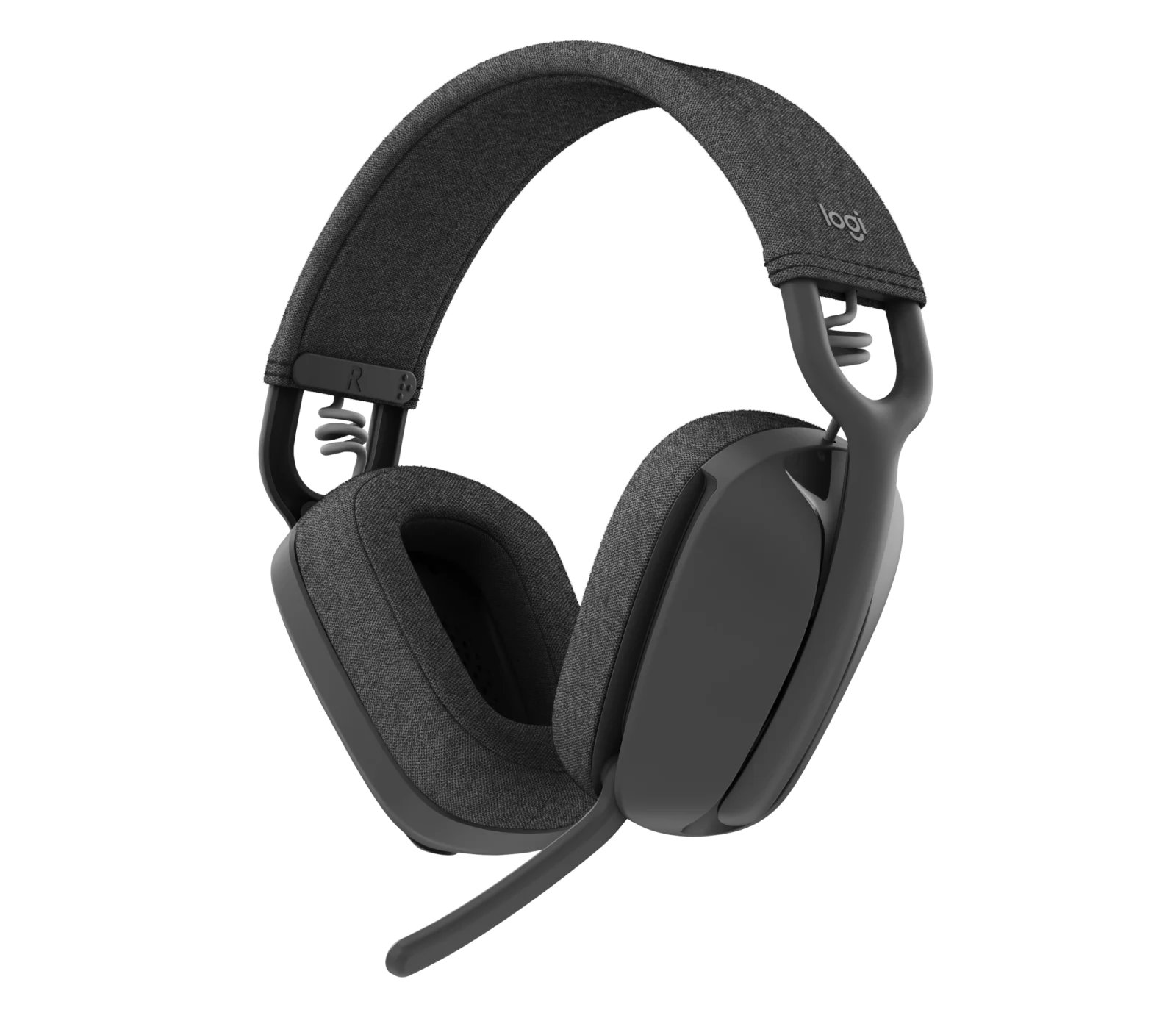
Pros
- Affordable Bluetooth headset
- Adjustable boom mic with mute
- Supports AAC for Apple devices
Cons
- No noise-cancellation for music
- No spatial audio
- No wired inputs
Most headphones just focus on the music side of things, with features such as spatial audio or noise-cancellation to enhance the listening experience, but Logitech takes a different approach with its Zone Vibe range of headphones. It’s more affordable than many of its rivals and focuses mainly on office use, for people who may work in call centers or customer support, or perhaps need a headset for video calls when working from home.
There are currently two versions of the Zone Vibe available from Logitech, with the Vibe 100 being a basic Bluetooth headset. There’s also the Vibe 125, which uses the same headset but also includes a USB wireless adaptor for use in busy offices that may have a lot of Bluetooth devices that could potentially cause interference and affect call quality (there’s a third model as well, although this is designed for large corporate users and is only available from specialist business suppliers).
The headset weighs just 185g, which is very light for a large over-ear headset such as this, as it’s designed for people who may have to wear it all day long while they’re at work. It also has a boom mic for voice calls, which can be folded up out of the way in order to quickly mute the mic as well.
There are no fancy audio features – there’s a noise-canceling filter on the microphone to keep your voice clear for calls, but the earpieces don’t provide active noise-cancellation (ANC) for listening to music. However, the headset supports Apple’s AAC codec for Bluetooth audio and provides good sound quality for both calls and music. It delivers a clear, detailed sound for the dense production on Kate Bush’s The Big Sky, and manages to balance the song’s huge avalanche of drums and percussion very well, without overlooking more delicate details such as the gentle tambourine that shimmers away in the background.
Battery life is good too, with 20 hours of listening time, or 18 hours of talk time for voice calls. And, paying good attention to detail, Logitech’s Tune app is available for Macs and Windows, as well as Android and iOS mobile devices, so you can easily get the Zone Vibe set up when you’re preparing to take voice or video calls at work.-Cliff Joseph
How Macworld reviews headphones
When our audio experts review headphones our comprehensive evaluation covers sound quality, design and comfort, key features like noise cancellation, and overall value for money. We undertake subjective listening tests and an objective analysis of features and build quality.
The most critical aspect of our headphone reviews is an assessment of audio performance including Tonal Balance, Clarity and Detail, Audio Defects and Spatial Audio.
Active Noise Cancellation and Transparency Modes are also assessed, both being primary features users look for. We test how effectively the headphones block out different types of ambient sound, such as the low-frequency drone of an airplane engine versus higher-frequency chatter. We also assess how well transparency mode amplify outside sounds when you need to be aware of your surroundings.
Design, comfort and build quality are also important factors, as is the ease of use when it comes to the controls and functionality. Battery life is another important consideration, and the time it takes to charge the headphones.
Finally, we review the available connection options and the codecs supported since AAC support is required for Apple devices.
Buying advice: What to look for when buying headphones
For the most part, the main differences between models relate to comfort and sound quality, but not all full-sized headphones are equal and there are some other features that may interest you. To help you find the perfect set of over-ear headphones, here’s what to look (and listen) for.
Style: Full-size headphones fall into two categories: closed and open. Closed models block out some degree of external noise (and also keep your music from disturbing others), while open models, which some people prefer sonically, let more noise in and out. Note that to reach their potential, many full-size models (open or closed) require more juice than others.
Noise-Canceling: If you’re not a fan of in-ear-canal ‘phones, but you want something that can filter out external noise such as airplane engines, train rumblings, or the hum of a crowd or noisy office, consider investing in a good set of noise-canceling headphones. These headphones sample outside sound and then pipe in an inverse audio signal to “cancel out” a good deal of monotonous noise. (For more on the technology and its limitations, see my review of noise-canceling models from a while back.) Although they don’t usually sound as good as comparably priced in-ear-canal headphones, noise-canceling models are easier to put on and take off, and they let you hear what’s going on around you. Noise-canceling headphones are available in canalbud, lightweight, and full-size models, but full-size models tend to provide the best noise isolation and audio quality.
Wireless/Bluetooth: If you think being tethered to your Mac, iPhone, iPad, or iPod is a drag—or, for the gym rats, an equipment-snagging hazard—consider going wireless. You can stream audio to stereo Bluetooth headphones from Macs; iPad; and iPhones. Most Bluetooth headphones also double as headsets, letting you seamlessly switch between music and voice features.
Apple has always focused purely on Bluetooth for wireless audio, ignoring the fact that you really need a wired connection to play the high-quality lossless and high-res audio formats that are now available on Apple Music and other streaming services. That is a weakness with the expensive AirPods Max, which rely on Bluetooth alone, and can’t even play the best audio formats provided by Apple’s own streaming service.
There are a lot of low-cost over-ear headphones that only use Bluetooth to provide wireless audio, but the best over-ear models also tend to provide one or more wired connections via a USB-C interface or a 3.5mm audio connector (or both).
Auracast: Apple’s also lagging behind some of its rivals with support for new Bluetooth features, such as the Auracast broadcasting technology. Auracast allows one device or audio source to transmit Bluetooth audio to multiple sets of headphones, as well as Auracast-compatible hearing aids and cochlear implants. That broadcasting ability makes Auracast great for public announcement and entertainment systems, as well as being a useful accessibility feature for people with hearing problems. At an event promoting its accessibility technologies, Apple staff reportedly said that it is “excited” by the potential of Auracast, although the company has not given any indication of when it will add Auracast to its own products.
Specs and sound quality: As I noted in our speakers buying guide, you should generally ignore manufacturers’ specifications—especially frequency-response numbers. There’s no standard testing methodology for headphone frequency response, and many vendors exaggerate their specs for marketing reasons. Even if specs were accurate, they wouldn’t tell you much about how a particular set of headphones actually sounds.
Instead of reading specs, use your ears. (If you can’t audition a product in person, read reviews from a source you trust.) As with speakers, a quality set of headphones reproduces audio with good balance between the treble (upper), midrange, and bass (lower) frequencies, producing full, rich sound while preserving detail. However, because of their especially small drivers (speakers), headphones present a unique challenge when it comes to bass response: Unlike huge speaker woofers that you can not only hear, but feel, the drivers in most headphones can’t reproduce the visceral impact of low bass—you may be able to hear the lowest frequencies, but you probably won’t be able to feel them.
We point out this bass issue because some vendors address it by emphasizing certain bass and upper-bass frequencies to give their headphones more “kick.” This helps the headphones stand out from other headphones in the store, and some people—especially those who use their headphones when exercising or for beat matching—really want that visceral impact. But such headphones often become fatiguing to listen to over time. If you’re interested in accurate audio reproduction, be careful not to be wowed by emphasized bass. (The same goes for exaggerated treble detail.) The best approach is to audition a set of headphones for several hours—or, even better, several days—with a variety of music. If the headphones still sound great at the end, there’s a good chance they’ll satisfy you over the long run.
Headset functionality and inline control modules: Many current headphone models include, right on the cable, an inline module with a microphone and one or more remote-control buttons. At the minimum, the remote features a single multi-function button for controlling media playback; making, taking, and ending phone calls; and taking advantage of iOS’s Siri and Voice Control features. You may also find dedicated volume-up and -down buttons, as well. The module’s microphone can be used to talk on the phone, make voice recordings, and give Siri and Voice Control commands.
Fit/comfort: Unlike most consumer-electronics devices, you actually wear headphones. So how well a set of over-ear headphones fits your head plays a significant role in your long-term satisfaction (or lack thereof). We include a few comfort-related tips below when describing the different headphones, but reading about a particular style is no substitute for actually giving a product a test drive (or a test run, as the case may be).









